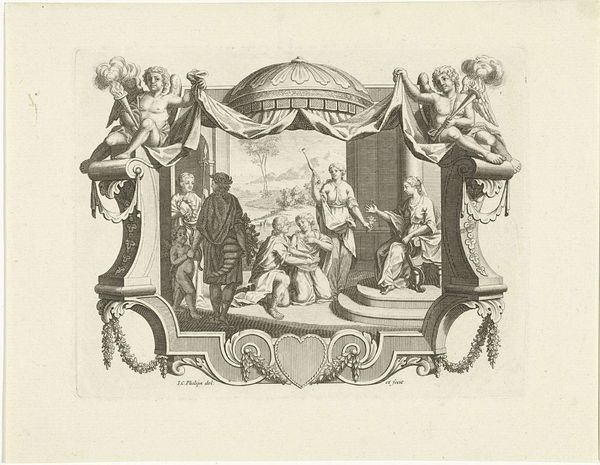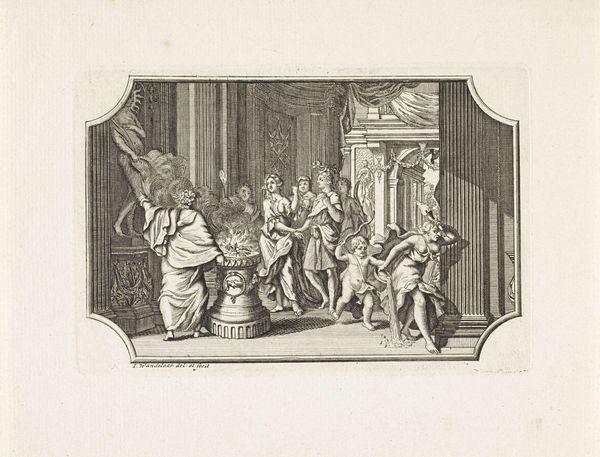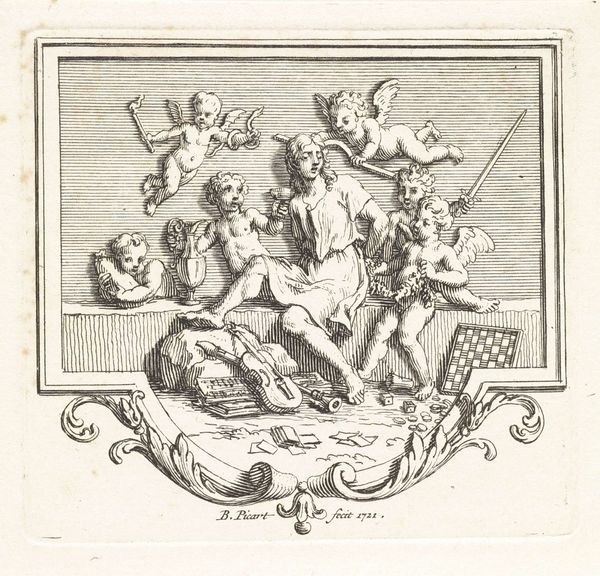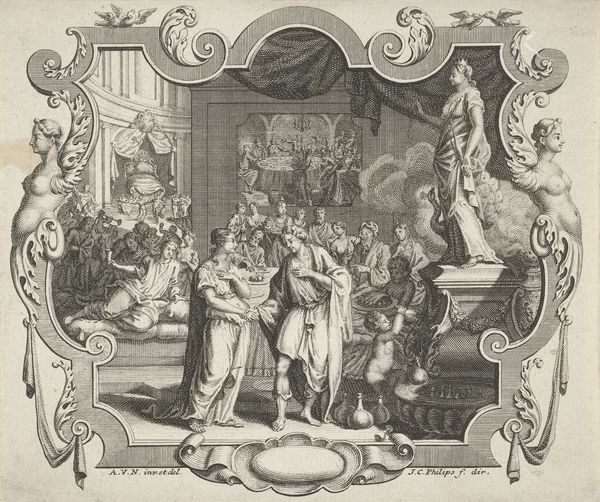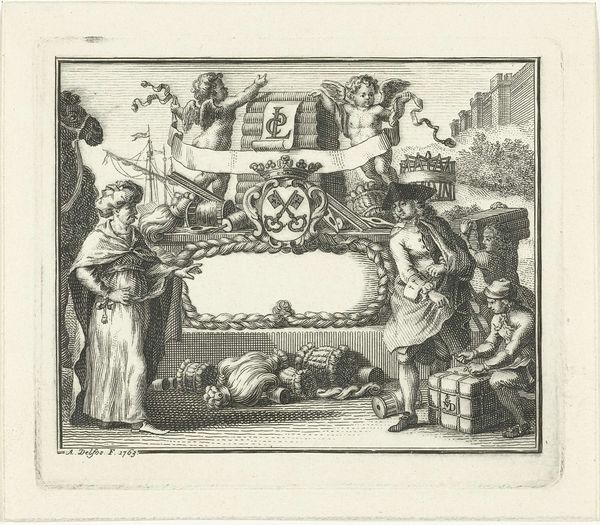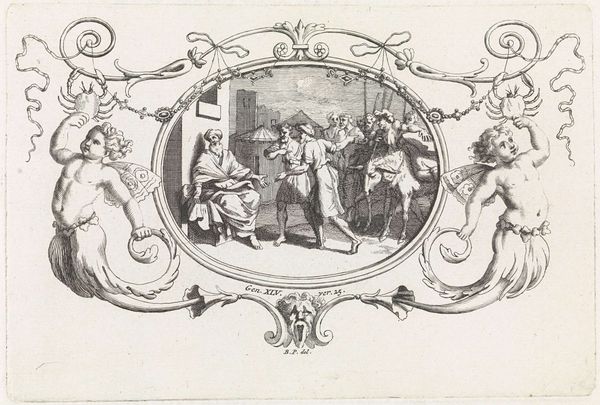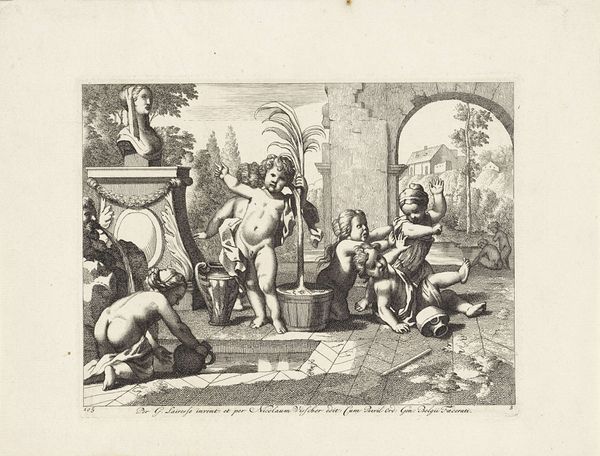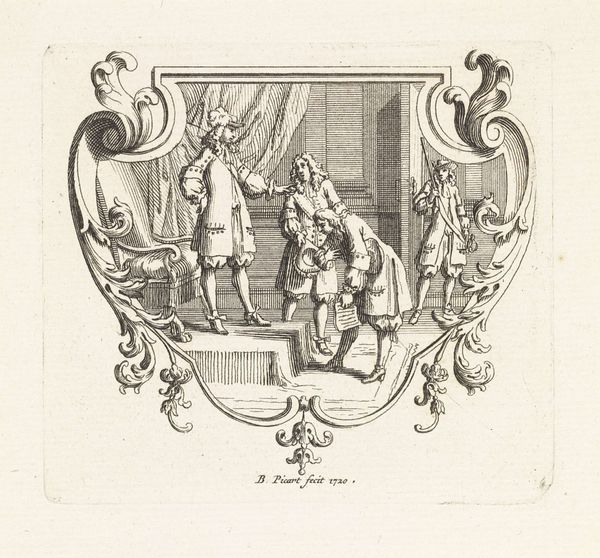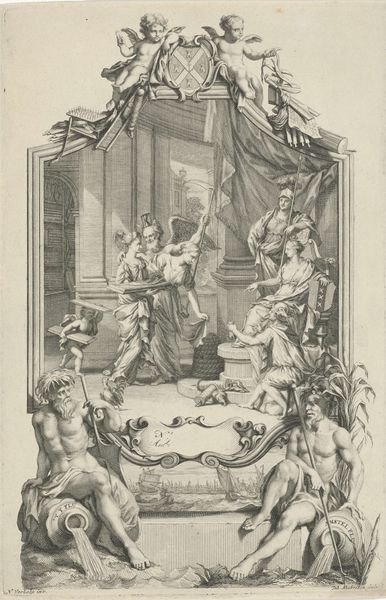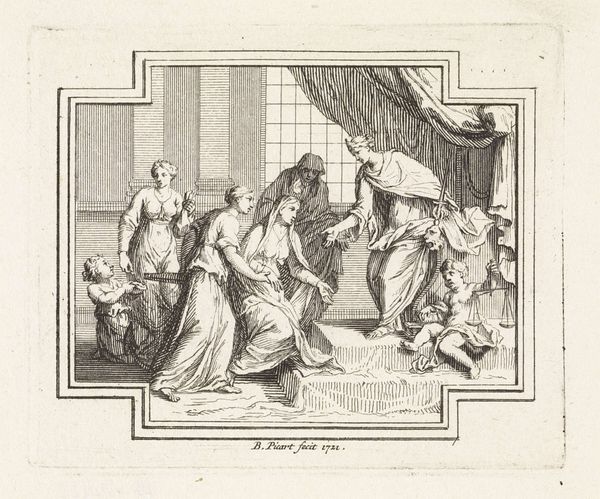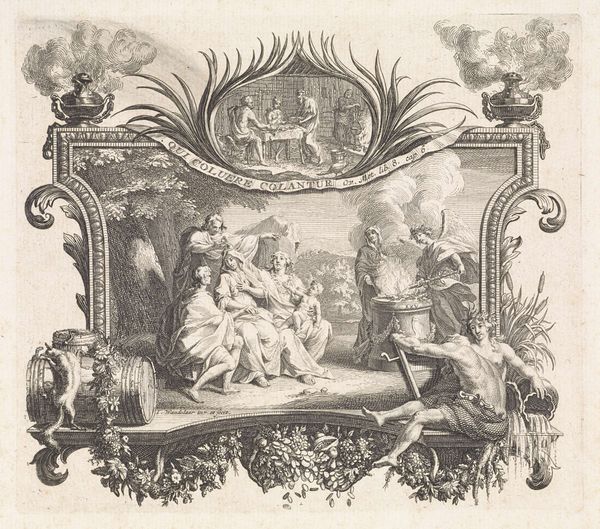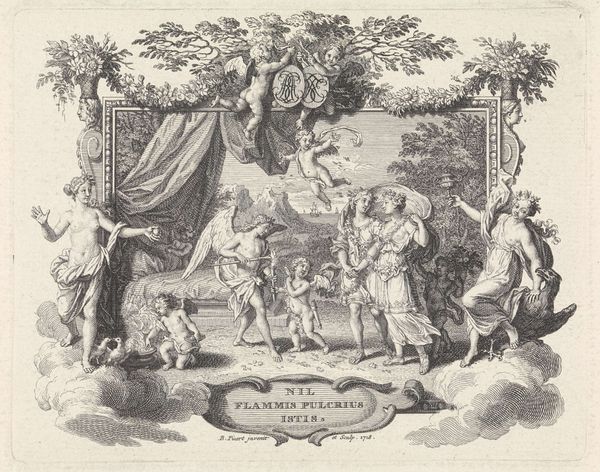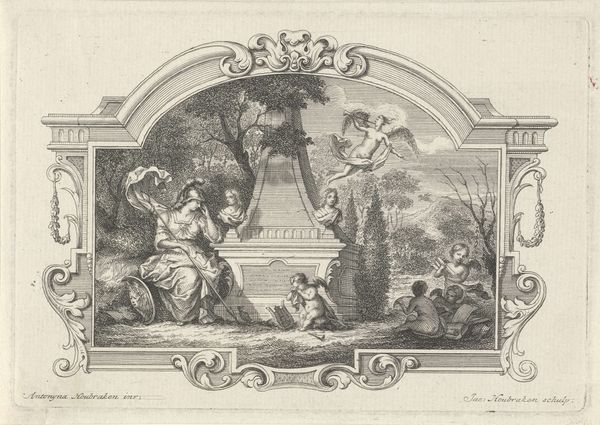
print, engraving
#
baroque
# print
#
figuration
#
line
#
history-painting
#
engraving
Dimensions: height 67 mm, width 75 mm
Copyright: Rijks Museum: Open Domain
Curator: Ah, yes, Bernard Picart's "Diogenes zoekt een mens" from 1720. An engraving, skillfully rendered, part of a larger project documenting world religions and customs. Editor: It strikes me as a rather theatrical scene, almost farcical. A group brandishing masks and crowding around a central figure with what looks like a lantern. Curator: Exactly. Diogenes, lantern in hand, is famously searching for an honest man. It's steeped in the tradition of classical satire, questioning societal values and the performativity inherent in human interactions. Consider the masked figures – they become a representation of hypocrisy and hidden identity. Editor: The engraving's medium itself—the careful lines, the precise execution—adds a layer of meaning. Picart, as an engraver, was participating in a very specific craft and in a capitalist model where images are commodities to be bought and consumed. Curator: Precisely! We must ask how this image serves power? Here, it offers a perspective that disrupts norms, echoing broader Enlightenment critiques of institutions. Who, therefore, becomes implicated? This resonates today, with debates about authenticity, representation, and truth in the digital age. Who is behind the mask now? Editor: It's not just the content but the material conditions and production of that content that makes it possible and that give us meaning. Those barrels in the background point to an economic and labor context as much as to any particular symbolism within the artwork itself. The engraver would need access to those barrels in order to do what he does in the foreground of the picture. Curator: And isn't the choice to depict it as a scene also so revealing of its intent! These figures don’t naturally materialize as Diogenes found them; someone, in fact, grouped these elements in place for maximum philosophical effect. This reveals, also, something very deep about art's performative effects. Editor: The choice of materials – the metal plate, the inks – influenced its reach and dissemination. This isn't high art isolated in a gallery. It was intended for wider consumption. Curator: Thinking about the societal shifts and the challenges that persist across centuries invites a really relevant dialogue. Editor: Definitely gives you a lot to ponder considering art's relation to society.
Comments
No comments
Be the first to comment and join the conversation on the ultimate creative platform.

